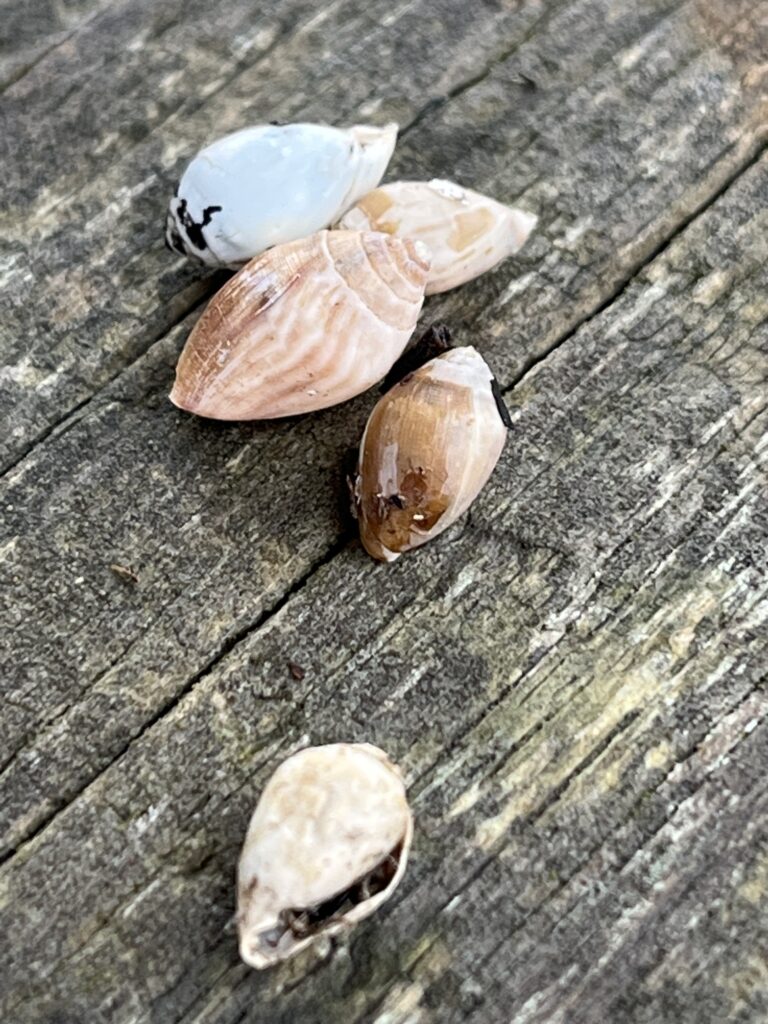
Image Usage Information
Family: Ellobiidae
Common name: Florida Melampus
Discovery: L. Pfeiffer, 1856
Identification
Height: 5-7 mm
Whorls: 7-8
The shell of Melampus floridanus is ovate-conical in shape (Abbott, 1974). The spire is low and the shell is widest at about the upper third. A narrow aperture runs for about 2/3 of the shell height, with 2 lamellae on the inner columella, and about 10-12 raised lirae within the outer lip. The shell color is mahogany brown with one white spiral band below the suture and about the periphery. The similar Melampus bidentatus is larger with fewer whorls and only 1-4 spiral lirae inside the outer lip.
Ecology
This snail lives in high salt marsh and mud flats and is considered semi-terrestrial. It can survive very low salinity water. It is an air-breather, or pulmonate, that can survive for extended periods upon vegetation above or beyond the water. Individual snails live up to 2 years.
Taxonomy
Synonyms of Melampus floridanus include Detracia floridana; Tralia floridana; Auricula rugeli.
Distribution
Melampus floridanus exhibits a somewhat disjunct distribution, with most found in Florida and the northeastern Gulf of Mexico, and another sizable population in New Jersey and the Chesapeake Bay area, with sparse records between those two areas. It is unclear whether this species was introduced from Florida to the Chesapeake Bay area, or whether it naturally occurs all along the east coast, and the sparse records of Georgia, the Carolinas, and Virginia, simply represent sparse collecting.
Conservation
NatureServe not ranked
